
Tooth loss can be troubling. You may be overwhelmed, thinking about tooth replacement and dental procedure costs, your comfort, and your dental health. Let’s look at some of your options for tooth replacement and compare their benefits and disadvantages so you can keep smiling with no worries.
If you want to know how much dental implants cost, how long dentures last, and other information related to dental implants and dentures, read on.
Dentures
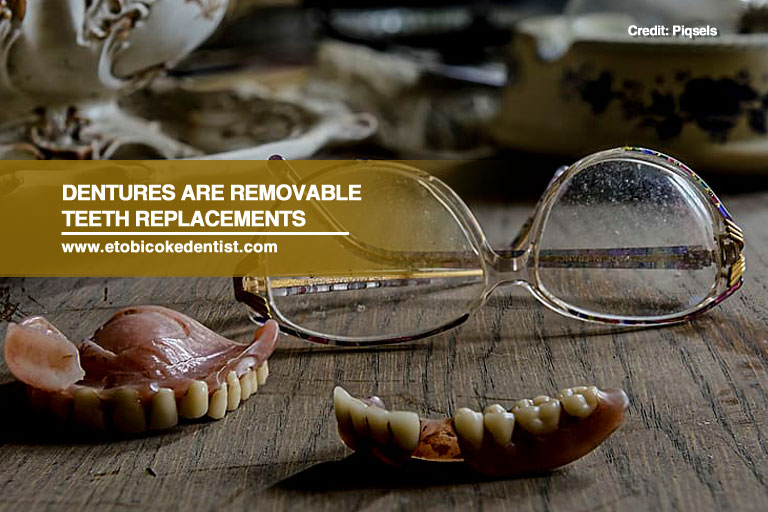
Dentures are removable, artificial replacements for lost teeth and gum tissue. Before making dentures, a dentist or specialist will take an impression of your teeth to make a model that will fit your mouth well.
Partial Dentures
Also called “removable partial denture prostheses” or “partials,” partial dentures are composed of 1 or more artificial teeth held together by clasps that attach to adjacent natural teeth (traditional partial dentures) or by special precision attachments that are built into crowns (precision partial dentures). A dental crown or cap is fitted over a tooth like a thimble over a thumb. It is used to preserve or restore the tooth’s shape and size.
Partial dentures are used when there are remaining natural teeth in the upper or lower jaw. It fills in the gaps left by missing teeth and keeps the remaining natural teeth in place. You can remove them on your own to clean them or at night when they won’t be of use.
Complete Dentures
Also called “false teeth” and “full dentures,” complete dentures are attached by suction. The artificial teeth are held together by a pink acrylic base that mimics the look of gums. Some complete dentures include a light metal structure to improve stability and provide additional support.
Complete dentures can be sore to use for the first few days and may take some time to get used to.
How Dentures Are Made
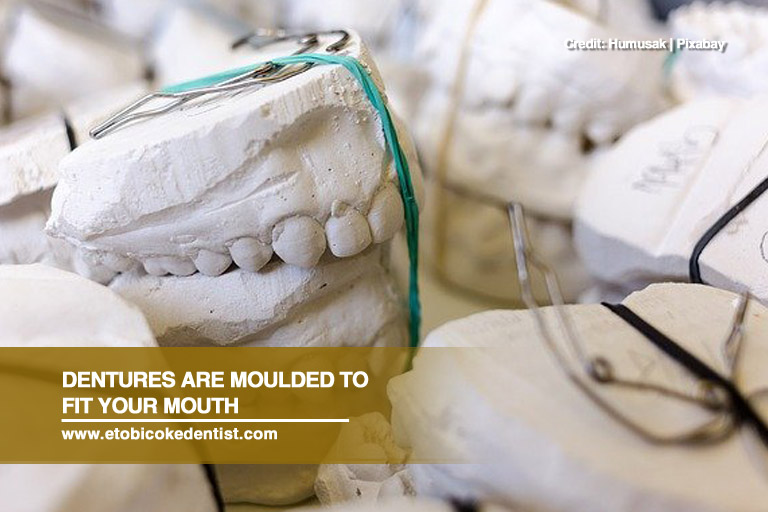
- A dentist or specialist will take impressions of your mouth. To make a dental impression, you have to bite onto a liquid or semi-solid impression material (such as plaster of Paris, agar, and silicone) that will make a copy of your dentition (the shape and arrangement of your teeth).
- When the impression material dries and sets, it will be used to make models or casts custom-fit for your mouth. You may have to try these models or casts a few times so the dentist or specialist can determine the right specifications for your dentures (such as colour, shape, and measurements).
- The final dentures are made. It can be adjusted if required.
Dental Implants
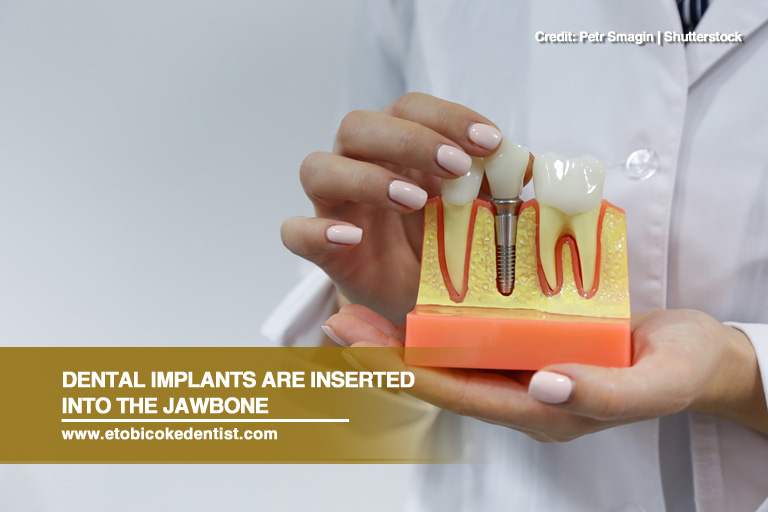
Dental implants are small, screw-like titanium rods that work as artificial roots. They are inserted into the jawbone and through osseointegration, merge with bone tissue to form anchors that will hold artificial teeth.
Dental implants can be used in combination with dentures, crowns, and other tooth replacement devices like bridges.
Dental Implants Types
The most commonly used implants, endosteal, are the ones described above. However, there is a special kind of implant for people whose jawbones are not healthy or strong enough to undergo surgery and do not have the structure to support an implant. Subperiosteal implants are inserted beneath the gum and on or above, not in, the jawbone.
Dental Implant Procedure
- A dentist or specialist will assess if you need dental implants by taking a close look at your mouth and getting x-rays of your head, jaw, and teeth.
- First stage: a dental implant is inserted into your jawbone under your gums. The gum tissues are then sewn close. You have to wait for months before the next procedure so the tissues can heal and the dental implants can osseointegrate or form bonds with bone tissues.
- Second stage: An abutment is fastened onto the implant. This will bind the artificial tooth to the implant. In some procedures, the first and second stages are combined.
- An artificial tooth is fastened onto the abutment. You may have to make a few trips back to the dentist to ensure the tooth is securely fitted.
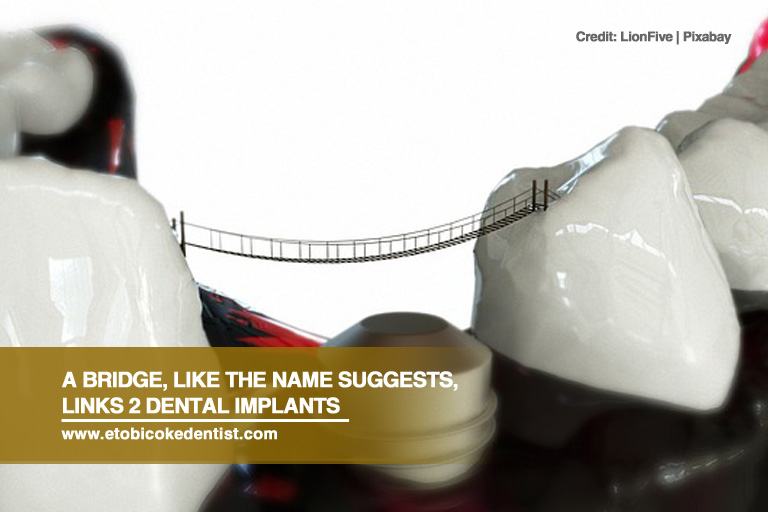
05.A fixed bridge is used if more than 1 implant is being made. It fills in the gaps of 1 or more missing teeth and is held up by dental implants on both ends.
Additional Procedures
In cases where the jawbone is not healthy or strong enough to support an implant, these methods can be used to modify the bone structure and strengthen and restore bone tissues:
- Bone Augmentation
In this procedure, missing bone is replaced by another bone taken from a different part of your body or by synthetic bone-like materials. - Sinus Lift
Also known as “sinus augmentation” or “sinus elevation,” this procedure is done to add bone mass to the upper jawbone. This part of the jawbone can deteriorate due to the loss of upper back teeth. - Ridge Expansion
To make one’s jaw wide enough for implants, space is cut into the ridge bone. This space is filled in with a bone graft.
Factors to Consider
Consider the following when choosing your tooth replacement:
- Is this procedure covered by my dental insurance? Dentures are typically covered by dental insurance plans, but dental implants are not because they are considered a cosmetic procedure.
- How long will this tooth replacement last?
- Will I feel comfortable with this tooth replacement? Will it look natural or artificial?
- How will this tooth replacement affect my overall oral health? Will it help preserve the condition of my remaining teeth?
- Are there any limitations or restrictions when using this tooth replacement? What type of maintenance does it require?
Benefits and Disadvantages Comparison
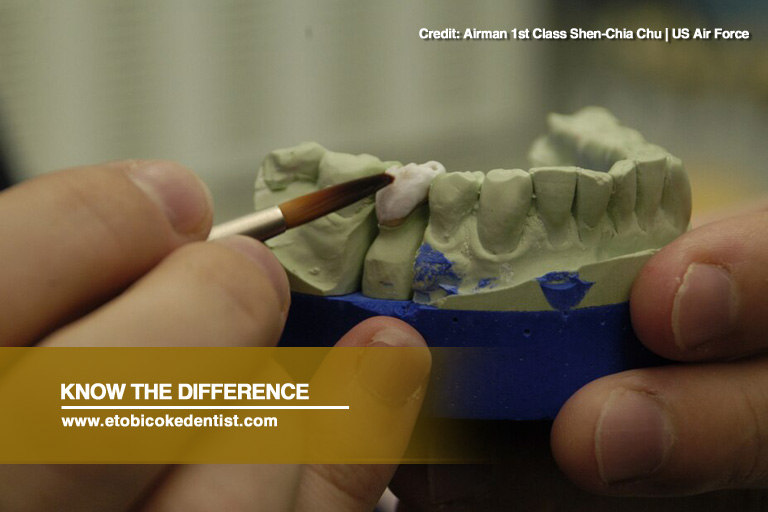
| Dentures | Implants | |
| Jawbone | As you age, your facial structure may weaken due to bone loss. Dentures maintain their shape and do not adjust with your facial structure. It may not fit well over time. | By preventing bone from shrinking and keeping them engaged, dental implants help keep your remaining jawbone in good condition, preserving your facial structure. |
| Support | Dentures are removable and externally attached to gums. These may be accidentally dislodged, which can be embarrassing or uncomfortable. | Dental implants are fixed and internally attached to your jawbone like natural teeth. |
| Durability | 7 to 15 years | Dental implants can last for a long time. |
| Cost | Less expensive | More expensive |
| Comfort | Dentures can be sore to use for the first few days and may take some time to get used to. | Dental implants feel and work like natural teeth. |
| Look | Dentures may look artificial and can be obvious when they are accidentally detached. | Dental implants look like natural teeth and have no noticeable external attaching structures. |
| Maintenance | Dentures have to be detached and cleaned frequently. | Dental implants have to be brushed like natural teeth. |
| Speech | Dentures may affect the way you talk. | Dental implants don’t have any effect on the way you talk. |
| Eating | You may have to stay away from hard or sticky foods that will loosen the dentures’ hold. | Dental implants are fixed so you don’t have to worry about them coming loose with any type of food. |
| Invasiveness | None | You need at least 1 or 2 surgeries to apply dental implants. |
Dental Implants and Dentures Costs
Refer to this price guide to know how much dental implants and dentures cost in Toronto. According to Dental Implant Cost Guide, prices for a single dental implant in Toronto can go from $2,000 to $6,000. Meanwhile dentures all over Canada can cost $260 to $764.
If you need tooth replacement, contact Dr. Mark Rhody and our team in Etobicoke. Call us at (416) 231-4281 to schedule a consultation. We can help you with your dental needs, such as tooth extraction and whitening. We can provide quality dental products, such as sports guards and veneers, as well as denture care tips and other advice. Visit Etobicoke and let us rebuild your smile to perfection.
